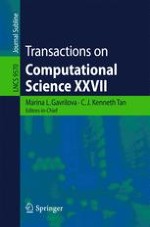2016 | OriginalPaper | Chapter
Mapping of Subtractor and Adder-Subtractor Circuits on Reversible Quantum Gates
Author : Himanshu Thapliyal
Published in: Transactions on Computational Science XXVII
Publisher: Springer Berlin Heidelberg
Activate our intelligent search to find suitable subject content or patents.
Select sections of text to find matching patents with Artificial Intelligence. powered by
Select sections of text to find additional relevant content using AI-assisted search. powered by
